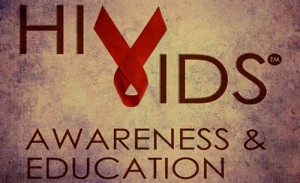HIV/AIDS On The Rise In Laos
Despite a well-run domestic prevention and treatment programs in Laos, the overall incidence of HIV/AIDS in the country seemed to be going up, according to UNAIDS Country Coordinator for Laos Pascal Stenier.
“The number of new cases for last year is estimated to be one thousand, which is three new infections per day,” Stenier said recently in an exclusive interview with Xinhua.
The Laos government has been working extensively with UNAIDS and other UN organizations to reduce the impact and transmission of HIV/AIDS in the country. As the region changes and develops rapidly, however, the at-risk groups and risk activities change and this impacts on the effectiveness of the programs.
“Economic growth and mobility bring new challenges and changes. Populations need to be monitored and the country has to be equipped to do that,” Stenier said.
With the support of the Lao government, extensive prevention, testing, monitoring and treatment campaigns have been launched over the last decade. These have targeted the most at-risk groups for HIV/AIDS in Laos: sex workers, men who have sex with men (MSM), and injecting drug users. MSM are considered a particularly at-risk group, with a HIV prevalence estimated to be at four to five percent based on UNAIDS and government data.
There is not much data on injecting drug users. The at-risk and infected groups are expected to be particularly focused on the northern provinces of Laos near the Golden Triangle, an area long linked with drug smuggling and use.
It is among the sex workers that the UN, in partnership with the government, has done a lot of work by contacting and educating them on the dangers of HIV/AIDS.
Stenier indicated that sex workers were evolving with new domestic conditions. “Now there are mobile sex workers, who are not working full time. Their work is casual and they can be reached through mobile phones. They are much more difficult to reach and to measure progress is difficult because you don’t approach them easily.”
The Laos government has passed a national law on HIV/AIDS, and is targeting a zero HIV infection. It also endorses the Millennium Development Goals (MDGs) due in 2015 that also targets reducing the impact of HIV/AIDS and other diseases in the country.
Stenier indicated that funding was also an issue, though the Laos government intends to begin supporting at least 20 percent of the programs budgets in the near future.
Stenier said he was very pleased with some recent progress in support for HIV-affected individuals with the Lao government’s official recognition of the Lao Network of People Living with HIV.
A delegation of Lao governmental officials and a representative from the Lao HIV Network will be attending the upcoming International AIDS Conference in Washington from July 22-27.
Source: Xinhua


